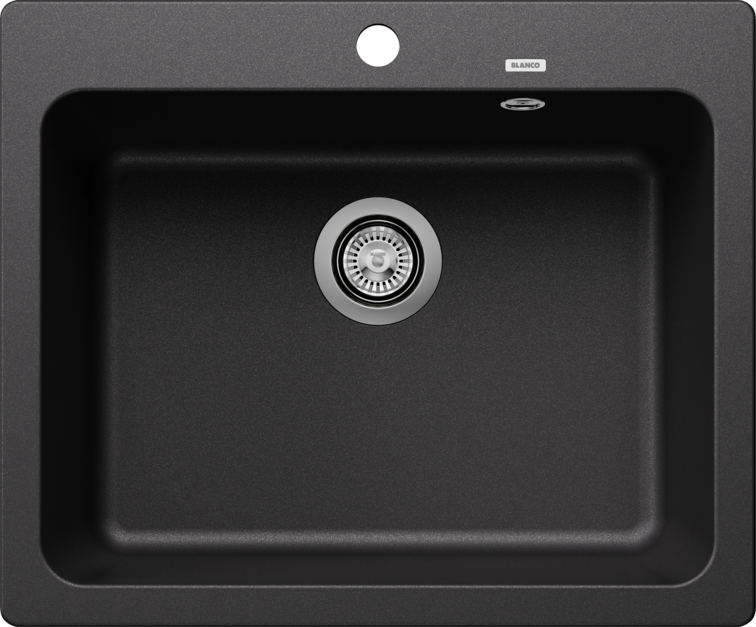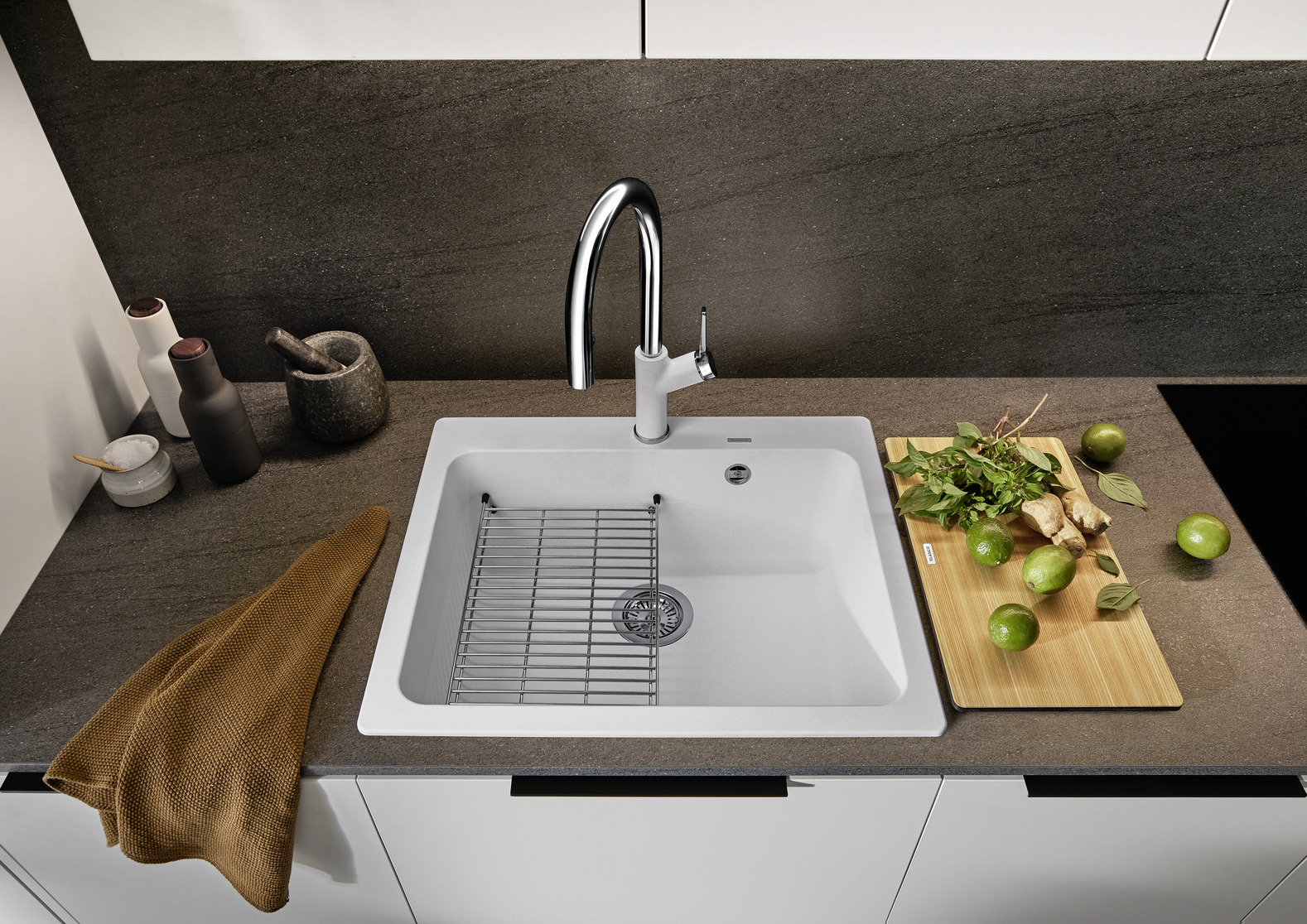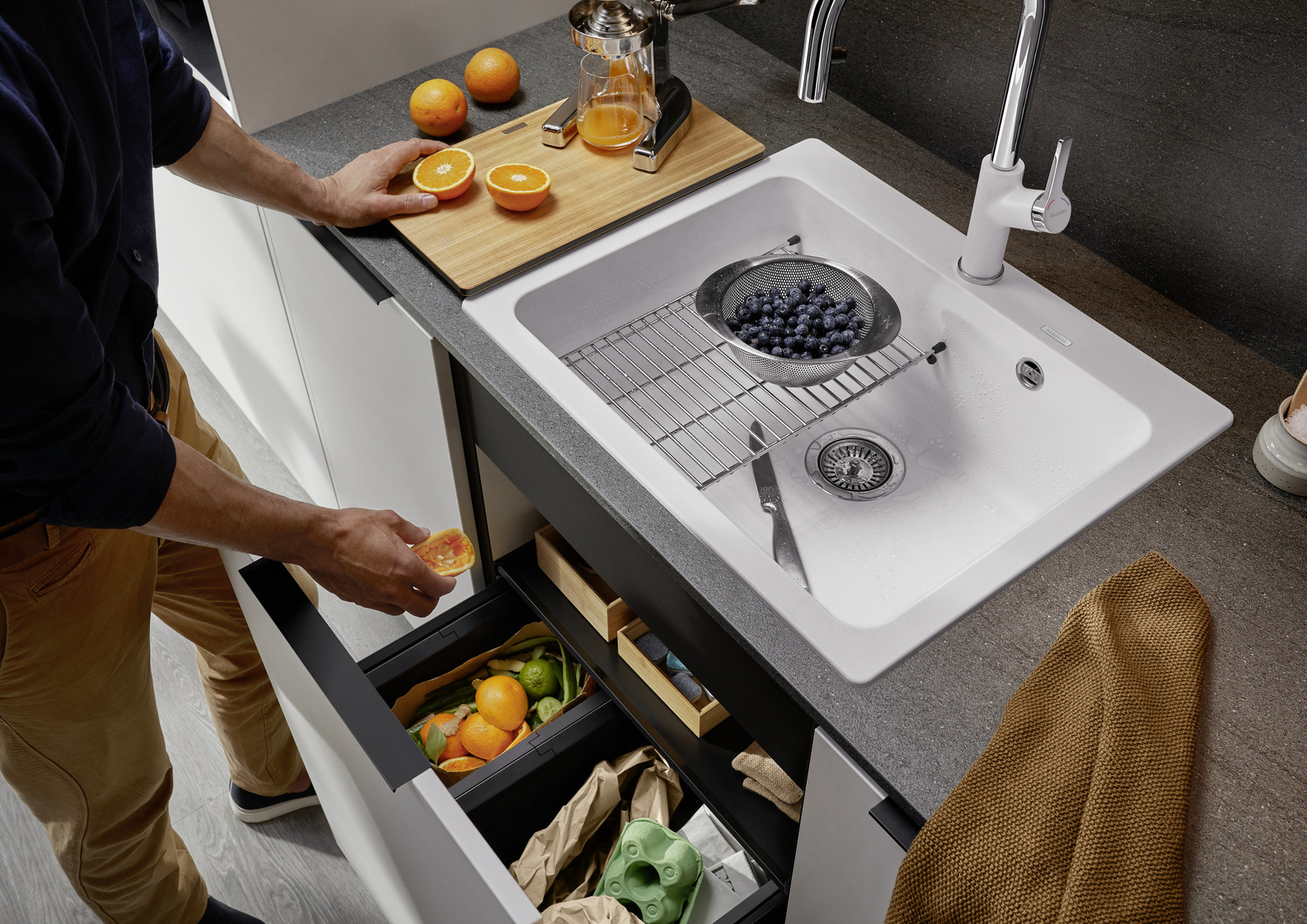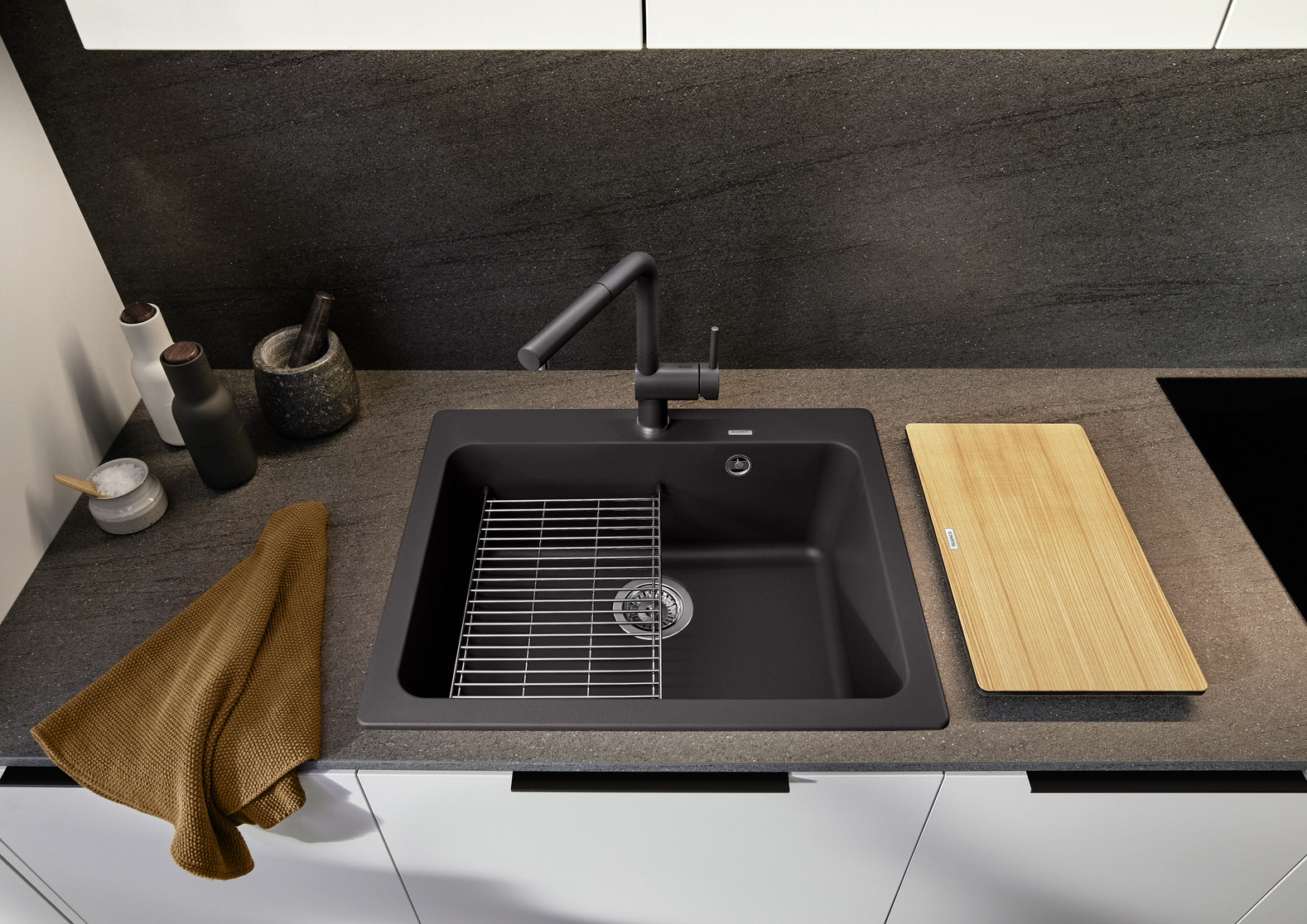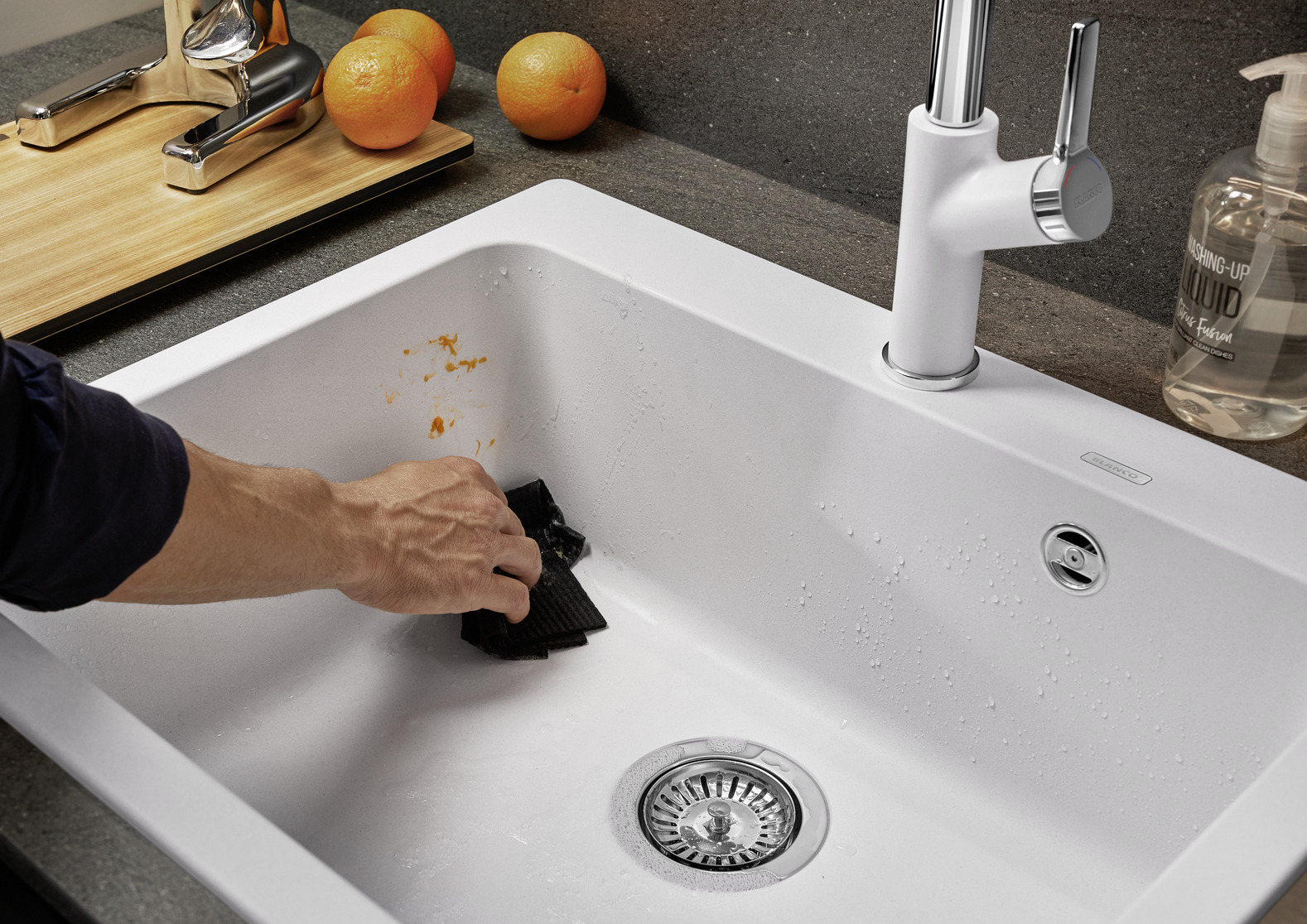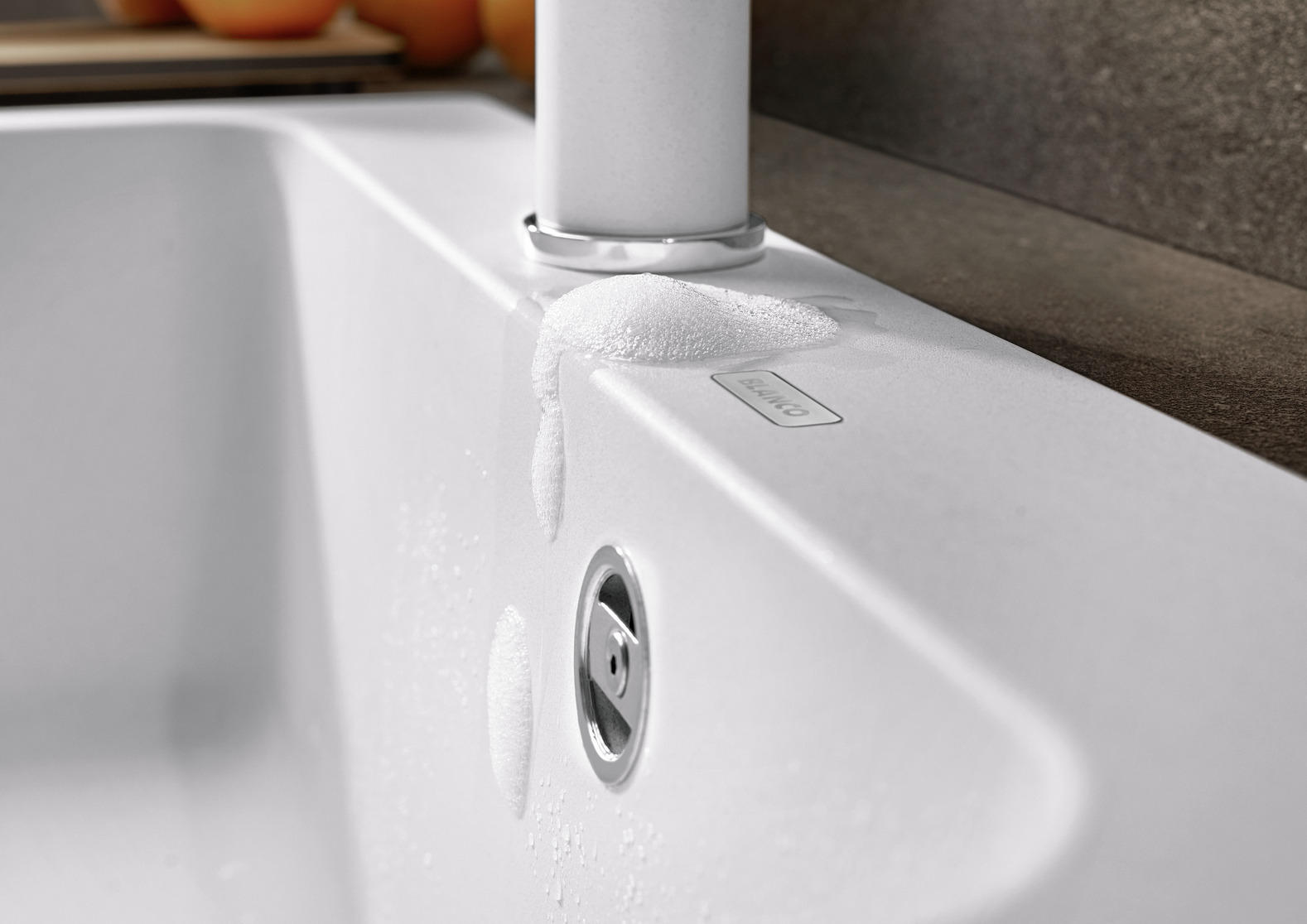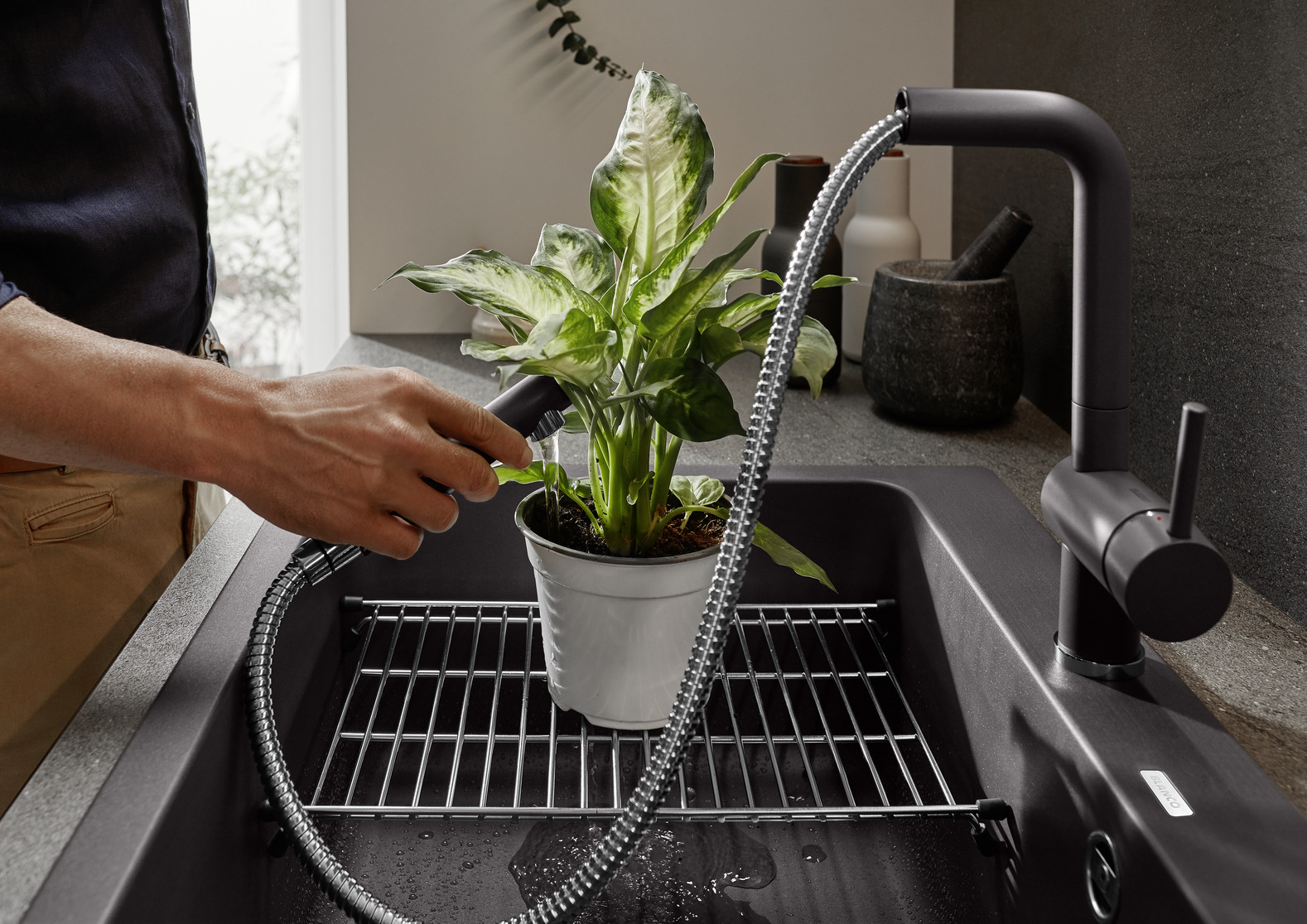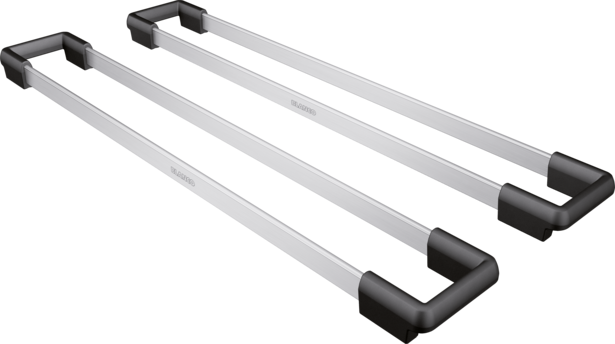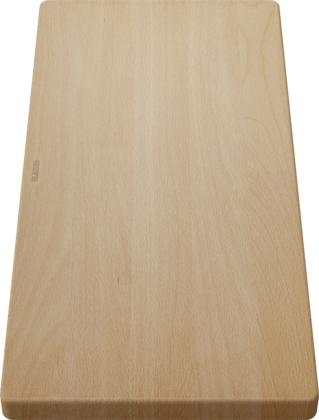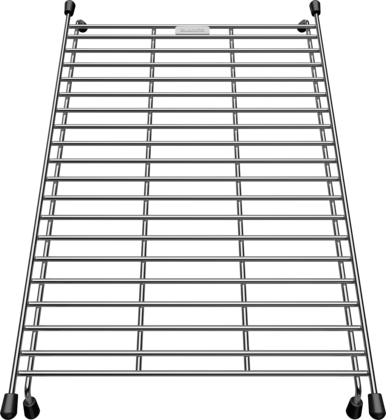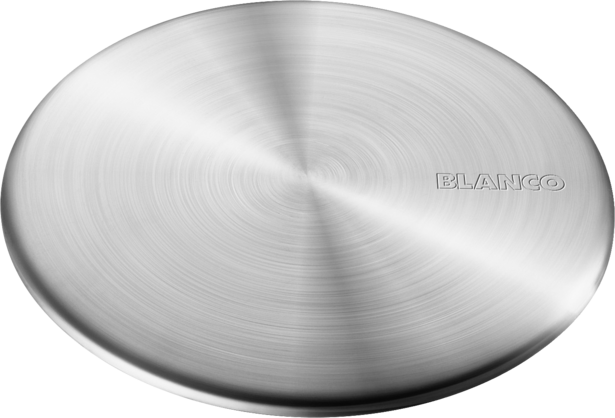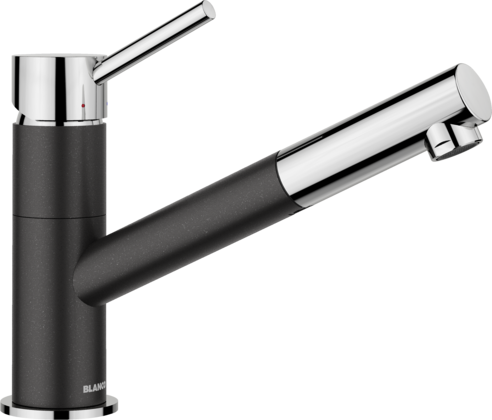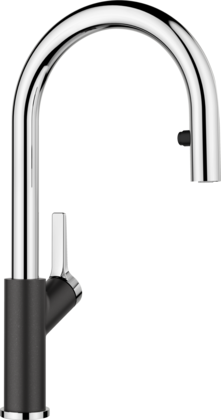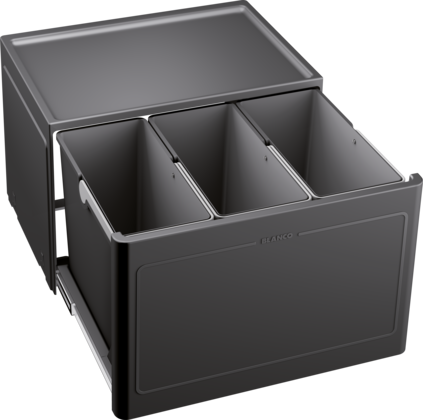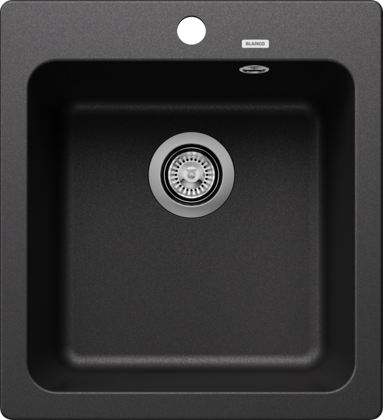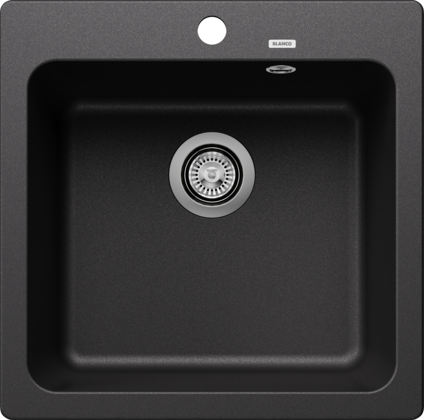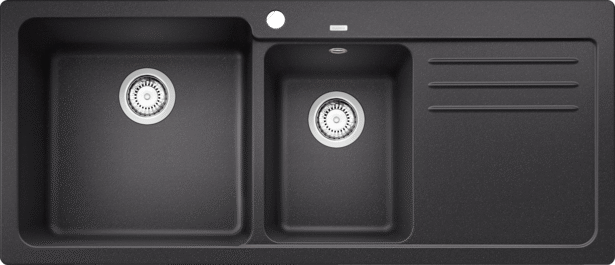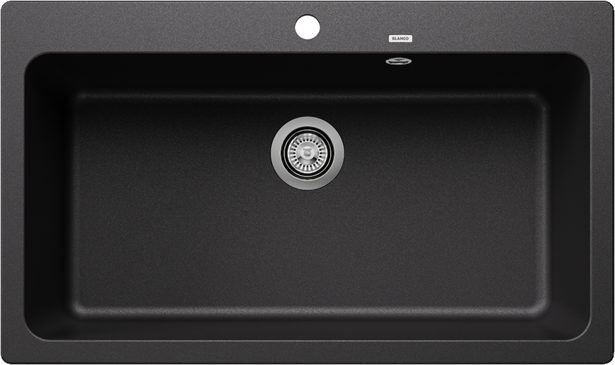Milky stains quickly stand out on your dark, chic sink. Limescale deposits are to blame, and they can vary in severity depending on where you live and the plumbing. These stains also like to pick up debris like coffee and tea, causing discoloration. However, this is all less bad than it sounds. If limescale or stubborn discoloration is visible, use BLANCO DailyClean+ or acid-based cleaners (as concentrated citric acid or acetic acid) to remove the limescale. Stubborn discolorations are stains fixed to lime; by removing the lime, the discoloration also disappears.
To do this, spray the sink sparingly with BLANCO DailyClean+ or an acid-based cleaner and let it sit for five minutes. Then clean your sink with a sponge, rinse it with water and rub the surface dry with a microfiber cloth
Note: Avoid aggressive cleaners, i.e. Strongly caustic or solvent-based cleaners, as they can attack even tough, resistant granite surfaces.
